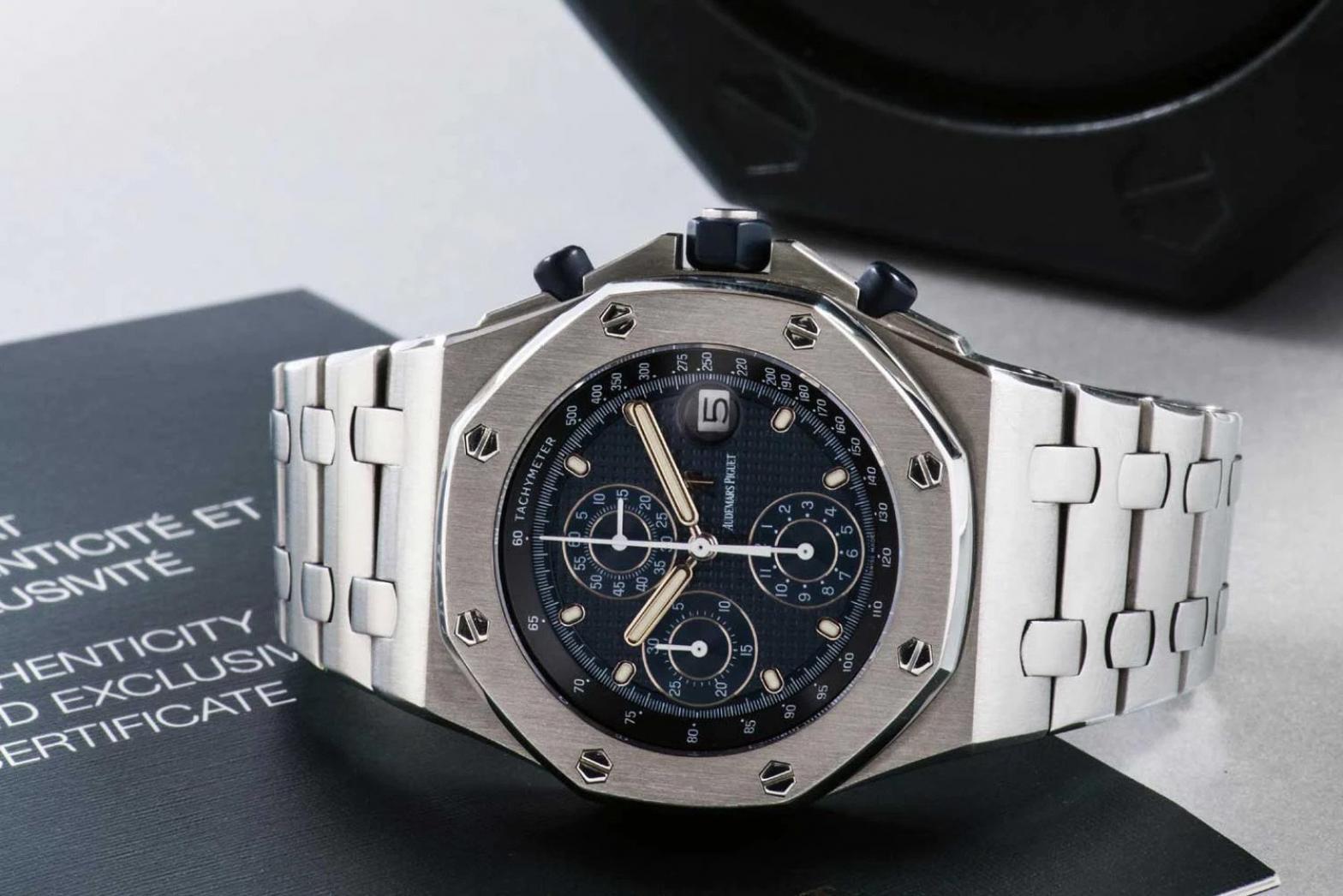
Often brushed aside in favor of its older sibling, there's no doubt that the Royal Oak Offshore deserves more respect from the watchmaking community. While a comparison to the Royal Oak is only natural, it's about time we look at it in its singularity
The discussion surrounding certain watches and their status within the watchmaking community has been going on for time immemorial. Is it an icon, or is it not? Is it a flop, or is it not? Is it good, or is it not? These conversations are an integral part of horology as they enable us to discover different perspectives on a topic and understand things from various points of views. While one person might like one watch, another might dislike it. For example, I think the Audemars Piguet Royal Oak Offshore is an icon, so let me explore the collection and see if I can win you over.

Origin Story
Before we delve into why I think the Offshore is an icon, I would like to begin by exploring its history and where the model comes from. The Offshore is often just discounted as a re-hashed version of the Royal Oak, and that is something I would disagree with, but in the context of its history, this is an understandable perspective.

Released in 1993, the Offshore was conceived by young designer Emmanuel Gueit over a 4-year period which was supposed to align with the AP Royal Oak's 20th anniversary in 1992, but didn't quite end up so. The Royal Oak Offshore's philosophy was simple, to cater to the demands of a younger, sportier and trendier audience than the Royal Oak. While the Royal Oak was undoubtedly popular, it was by no means a true sports watch. The Offshore was designed to fill this gap in much the same way the Rolex Sea-Dweller was intended as a more extreme version of the Submariner – to have a more robust design with sport-specific conveniences built into it, which I'll explore later.





Gueit's original concept sketches didn't receive much praise within AP, and as such, only 100 prototypes were produced. It was seen as being beneath AP's remit as one of the Holy Trinity members to create such an oversized sports-focused watch. In the same way that Gerald Genta's original Royal Oak and Nautilus designs were shunned by the watchmaking world, he too shunned the Offshore's design and the direction AP took his beloved Royal Oak. Ironically, however, I don't think the Offshore's initial lack of popularity has any standing on its status as an icon today, in the very same vein as the Nautilus or Royal Oak, so let's explore its design, and how it has ultimately become an icon.
Unique Design
Featuring the Royal Oak's octagonal bezel and iconic integrated bracelet, I will concede that the Offshore does resemble the Royal Oak on the face of it. With that said, when has watchmaking ever been about looking at things at face value? We have to explore the nitty-gritty details to see where things become their own, and the Offshore is full of those details.

If we examine the Offshore, its DNA is clearly moulded to suit active wearers that want to get the most out of their watches. While its bracelet might use the Royal Oak's shape, its links are rounded over on their insides to facilitate a more comfortable experience on the wrist. Likewise, its overall design is far more robust than the Royal Oak's would ever hope to be. Measuring at 42mm in diameter, the Royal Oak Offshore, nicknamed "The Beast", was the first oversized luxury sports watch, at least in the modern context. Thus, the Offshore kicked off the trend that saw the rise of Panerai and other larger watch designs that dominated the 2000s. That's not to say Panerai would be making small watches if it wasn't for the Offshore, but the Offshore was first by a few months, so it has to get some credit.


Alongside its large diameter, the Offshore is a thick watch thanks to its larger rubber gasket, which provides superior water resistance, keeping with the robust and sports-oriented design that Gueit was going for. Furthermore, the Offshore features a chronograph, a tachymeter, a rubberised crown and pushers, a date window with a cyclops lens, thicker and more heavily lumed hands and indices, and crown guards – all signs that its design was focused on enabling the Offshore to take a beating. None of this can really be said for the Royal Oak. Sure, it was a luxury stainless steel sports watch, but in the same vein that the Ferrari 308 was a great sports car in the '70s, it's no match for the Ferrari 348 of the '90s, and neither is the Royal Oak a match to the Offshore in the sports category.



Markets Served
Beyond its design logic and historical provenance, I want to hammer home that the Offshore is an icon thanks to its status as a legendary sports watch, perhaps one of the first true sports watches. How might I do that? Well, I'll let AP do the talking. The Offshore has an incredible number of limited and special editions that all speak to its use as a sports watch – as it was intended to.

Alongside its Diver collection, another hint at its intention as a sports watch, the Offshore has famously been used as the silhouette for automotive-inspired limited editions like the Jarno Trulli, Gstaad Classic, Michael Schumacher and many others. It's also often used to celebrate the Queen Elizabeth II's Cup, a horse-racing event, and to celebrate the Swiss Sailing Team Alinghi amongst several other sports, sporting occasions and athletes like Lebron James.




However you view the Offshore's design, I think it is undeniable that it is an icon amongst sports watches, and thus an icon in the entire arena of horology. Sure, it's a watch inspired by another, but if that means it can't be considered an icon, then watches like the Aquanaut, the Sea-Dweller, the Explorer, the Speedmaster, and so many others have to be excluded too. After all, they were all inspired by what came before them, but, thankfully, this isn't how we view these incredible timepieces. They are just like the Offshore: icons.


